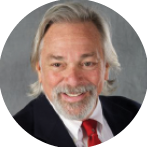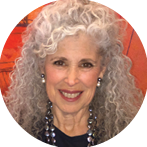

After completing our medical training at the University of Texas Health Science Center at Houston, we relocated to Iowa City, Iowa, initially without intentions of permanent residency in the Midwest. Following completion of our postgraduate training at the University of Iowa, however, we were drawn to the state—or, the land of sensible shoes, as we like to call it—by its nationally recognized literacy rate and the clear need for our services. Consequently, we found ourselves establishing roots there. This article chronicles the development of our practice from a single room to multiple offices with nearly 2 dozen doctors spanning two states and details our innovative strategies for practice growth and retirement planning.
FROM A SINGLE ROOM TO MULTIPLE LOCATIONS
In 1980, we laid the foundation for our practice by setting up a basic examination room within a general surgery office next to Muscatine General Hospital in Muscatine, Iowa. This initial setup included a pole, a slit lamp, an indirect ophthalmoscope and a pediatric fixation device designed to capture the attention of young patients. When a malfunction in the exam chair’s solenoid left an elderly patient in the up position, unable to lean into the slit lamp, however, we recognized the need for a second exam room.
Our practice flourished in a relatively unchallenged service area catering to 50,000 residents. By 1983, the growth was such that we engaged part-time associates and embarked on the construction of a dedicated office building. We then expanded to Davenport, Iowa. This larger territory offered more practice opportunities and became the location chosen to raise our family. Conveniently situated a short drive across the Mississippi River from Iowa, our practice boldly became the first local medical group to serve both Iowa and Illinois.
ADVANCING CARE WITH A PERSONALIZED APPROACH
Rapid response and emergency care management. Unlike nearby providers, we carried beepers and portable phones to facilitate speedy responses for emergency care management. We kept our offices open on Wednesday afternoons, a time when our colleagues typically played golf. Additionally, we closed on Friday afternoons, allowing our staff to enjoy long weekends. Our commitment to providing cutting-edge care was matched by our dedication to personal patient service. As the practice expanded, however, the timely management of emergency care delivery became increasingly challenging. To address this, we offered generous on-call salaries to provide financial benefits to new associates and allow our senior ophthalmologists more leisure time.
Innovations in ophthalmic techniques. We were pioneers in adopting new ophthalmic techniques and technologies. Our practice was among the first in our region to introduce several advanced practices, including topical anesthesia, suture-free incisions, outpatient cataract surgery, capsular tension rings, and intraocular antibiotics—just a few examples of our early adoptions in technique and technology—which garnered local media attention and patient acclaim. A particularly well-received initiative we introduced was same-day postoperative calls made personally by the surgeon. After a busy day in the OR, our personal cellphones were programmed to call patients during the drive home. The calls generally required no more than 30 seconds apiece and rarely identified concerns, but patients loved the personal contact. They raved about it for years after their procedures. To assure quality care, we also developed our own tech training program and lectured to our surgical staff regularly.
Community engagement. From the start, we employed local medical staff to strengthen our connection to the community. These team members, familiar with both patients and their families, provided us with valuable insights, especially for special circumstances such as family events or when dealing with prominent community members. We fostered a comfortable environment by using our first names professionally—Dr. Amir and Dr. Lisa—a practice our patients and staff cherish even a decade into our retirement. To further improve the patient experience, we hired customer care consultants from organizations such as Disney and the Ritz Carlton to train our staff.
Expanding services. In naming our practice Eye Surgeons Associates, we distinguished ourselves from neighboring optometric practices. Later, we were first in our area to offer comprehensive eye care that included both ophthalmology and optometry. For 2 decades, we refrained from dispensing eyewear to protect referrals. When we eventually introduced an in-house dispensary, we simultaneously launched a joint MD-OD primary eye care program to compete directly with VSP Vision Care. The program was equally owned by MDs and ODs. We innovated by offering estimated postoperative refraction, enabling patients to receive glasses from our optical at their first day postoperative visit. Patients enjoyed the flexibility of one postoperative lens change without an additional change when refraction was stable. We also provided complimentary reading glasses to patients who opted out of premium IOLs. These strategies boosted patient satisfaction.
Physician recruitment. Recruiting for our mom-and-pop operation initially identified less-than-ideal candidates. A turning point came when we hired cornea and oculoplastics specialists exiting the US armed forces. Hiring became much easier once our practice had four equal partners. We dedicated time to visit potential recruits at their training locations, allowing us to better understand their surgical skills, problem-solving abilities, and how they interacted with patients and staff in a familiar, less intimidating setting. This approach helped us better assess their potential to fit into our practice environment.
Recognizing the importance of family in the recruitment process, we also actively recruited the spouses of potential recruits, assisting in finding professional roles and introducing them to local schools. We worked with a grandmotherly realtor who would chauffeur candidate couples around town, relaying their concerns mentioned in the back seat of her car and volunteering her insights on their potential to integrate comfortably into the community.
For a decade we performed a broad range of surgical procedures. As new associates joined, we delegated vitreoretinal surgeries, corneal transplantations, and complex oculoplastics procedures to our newly hired, fellowship-trained physicians in the best interest of patients.
MEDICAL MARKETING
Medical marketing has evolved significantly over the years. Initially, our resources were limited to basic black-and-white stationery, business cards, and prescription pads. We expanded our outreach through community lectures and columns in local publications. We hired a national design firm to create a unique logo, but eventually chose a clip-art eye paired with a typeface reminiscent of the New York Times eye chart. This logo was then prominently featured on all our materials, including business cards, prescription pads, brochures, and videos, which aided in branding our practice. Additionally, we adorned our buildings with illuminated signs displaying the logo, especially those along highways. Our staff’s attire evolved from multipiece uniforms to polo shirts with our logo, and later to colored scrubs. We also distributed complimentary T-shirts with our logo to patients and their families participating in major community events, such as the Bix Road Race.
Our marketing strategy included allocating a budget for uninsured services such as LASIK. During promotional periods, our phone lines lit up on Monday mornings, a stark contrast to weeks without advertisement when the phone lines remained dark.
PHILANTHROPY AS A GROWTH STRATEGY
Our initial, unplanned use of philanthropy as a strategy for practice growth proved to be surprisingly effective. We started our practice at a time when the provision of free and discounted care to underprivileged individuals, community religious leaders, and school staff was not considered an inducement by the US government. Our practice’s philanthropic efforts, prominently featuring our name and logo, enhanced our visibility.
Snow cone machine. As providers of pediatric ophthalmology, we frequently supported school events and fundraisers in our service area, which had grown to encompass 800,000 residents. In addition to routine support such as purchasing Girl Scout cookies, we traditionally donated $25 for every request. During one tax preparation party, however, we recognized the limited impact of these modest contributions. Seeking a more impactful approach, we invested in a snow cone machine branded with our practice’s logo. We offered this machine, along with cups and syrup, free of charge for charitable events, asking only that borrowers provide the ice and return the machine clean and functional. This initiative proved far more effective than our previous donations, raising funds well beyond our historical contributions and greatly enhancing our community visibility and reputation.
Barnum & Bailey Circus. We also personally organized several large-scale events with philanthropic elements, the most significant of these being the purchase of an entire performance from the Ringling Brothers and Barnum & Bailey Circus (Figure 1). This event celebrated the vision restoration of nearly 4,500 cataract patients, each of whom were given an extra ticket for a guest. Planning this event took 1 year and involved sending out 35,000 pieces of mail. Our community generously donated skyboxes for attendees with mobility impairments. The media attention we received surpassed our expectations, with extensive coverage in local and regional newspapers, live broadcasts by network affiliates, and a feature produced by ABC for the national weekend news. The event even garnered attention in Reader’s Digest and USA Today, leading to inquiries from European media. The national medical media attention led to commendations from distant physicians. They acknowledged and thanked our contribution to enhancing the image of the medical profession. The most rewarding aspect, however, was the gratitude we received from patients, evidenced by thank-you notes we continued to receive for the next 5 years.

Figure 1. Dr. Amir Arbisser and Dr. Lisa Brothers Arbisser at their practice’s private Ringling Brothers and Barnum & Bailey Circus event.
See Life Clearly Foundation. In the mid-1990s we established See Life Clearly, a charitable foundation focused on exploring the impact of optical correction on the reading performance of asymptomatic grade school children. Over 2 years, we collaborated with local school districts to provide free comprehensive eye examinations for hundreds of third-grade students. We provided glasses at no cost to both children with myopia and to those whose spherical equivalent refractions exceeded +1.50 D. The study tracked comparative results using the Iowa Test of Basic Skills, administered in both third and fourth grade. Formal analysis by PhD-level statisticians indicated a potential 12-month academic advantage for these children over their uncorrected peers. This finding garnered enthusiastic media attention. Unfortunately, both states subsequently discontinued the use of the Iowa Test of Basic Skills. Facing the prospect of investing in two more years of complimentary services and another $100,000 for transportation and optical expenses under a new testing methodology, our team decided not to proceed, leaving our initial hypothesis unconfirmed.
Although most of our philanthropic efforts were local, we also helped our friends, Arun Sethi, MD, and Reena Sethi, MD, establish an ongoing charitable eye hospital in Delhi, India.
PROFIT SHARING
We implemented innovative compensation strategies to minimize internal competition. In later years, we enjoyed twice the amount of time off compared to most other partners, taking 12 weeks of leave per year, as opposed to six. One partner (L.B.A) used this additional time for activities such as teaching, publishing, patient advocacy, adopting new technologies and techniques, and enjoyed the benefits of a four-day work week when our children were young. The other partner (A.A.) devoted close to 20% of his time to a 6 year term on the Iowa Board of Regents.
In terms of practice expenses, these were equally distributed among all equal partners. After covering expenses, the remaining revenue was divided into three distinct categories for compensation: days worked, the number of individual patients served, and the fees generated. We designed this system to absorb the discrepancy between Medicaid and commercial compensations, thus preventing the preferential treatment of patients based on their economic status. Each equal partner received their proportionate share within each category, ensuring that no partner was financially disadvantaged due to the work schedules of their associates. This approach prioritized the overall success of the practice over individual financial gain.
Despite Iowa having the second-lowest Medicare reimbursement rates at the time, this system enabled all partners to thrive financially.
PHASING OUT
In 1980, we began our journey with the vision of establishing a multispecialty practice that would continue beyond our own careers. This vision began to materialize from the first day, as we opted for a generic, transferable practice name, emphasizing branding from the outset. Our approach to partner transitions, including financial aspects such as buy-ins and buyouts, was governed by a predefined formula based on retained profits. By using contractual agreements, we effectively minimized our reliance on external accountants and lawyers, thereby streamlining transitions and substantially reducing associated costs.
As the practice grew and new partners were integrated, equity was redistributed evenly among all partners, ensuring equal ownership. By our retirement (Figure 2), we each held only two of the 12 equal shares in the practice we had founded.

Figure 2. Drs. Amir and Lisa Brothers Arbisser near the time of their retirement.
In the later years, we introduced a job-sharing model, alternating working months with another ophthalmology couple, Priscilla Arnold, MD, and Paul Arnold, MD. To facilitate this arrangement and address any potential concerns from other partners, we assumed all associated risks in the first year. This arrangement, lasting 4 years, led to increased practice productivity by optimizing overhead utilization and minimizing concurrent time off among the four of us. This gradual phasing out of the founding partners contributed to the economic and staffing stability of the group. Moreover, it legally exempted the practice from incurring costs associated with part-time employee benefits. The extended time off afforded by this arrangement not only facilitated a smoother transition into retirement for both couples but also allowed us to establish legal residence in a state without personal income tax.
CONCLUSION
We have appreciated the opportunity to revisit our past experiences and share the innovative solutions we developed. It is important to emphasize, however, that this reflective journey in no way diminishes our ongoing commitment to delivering uncompromised patient care. Evolving regulations in the current health care landscape may present challenges to replicating many of the approaches we adopted in our practice’s earlier days.




